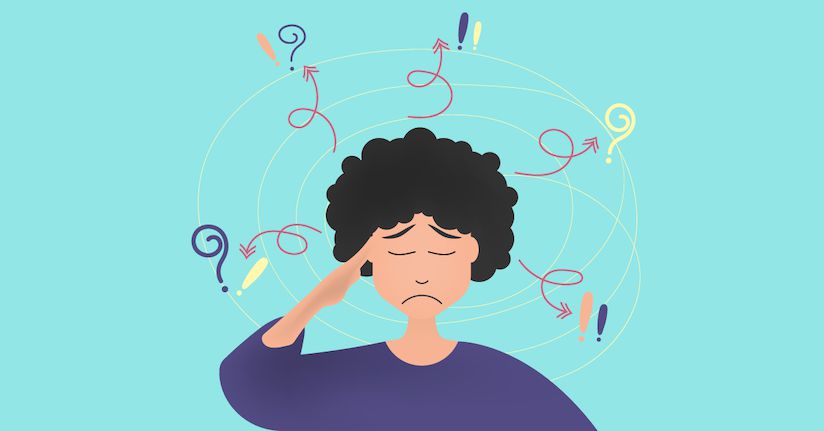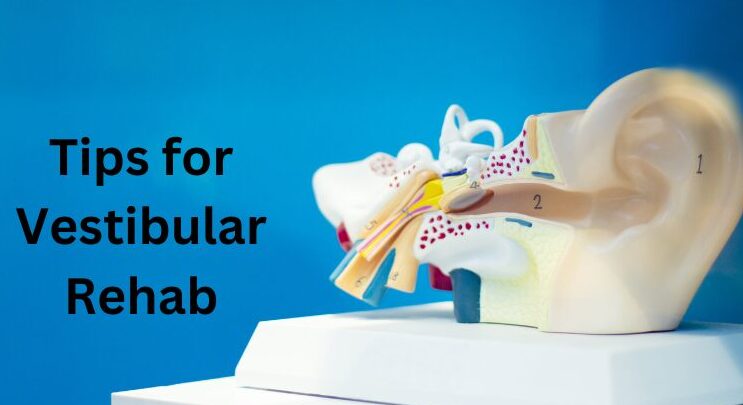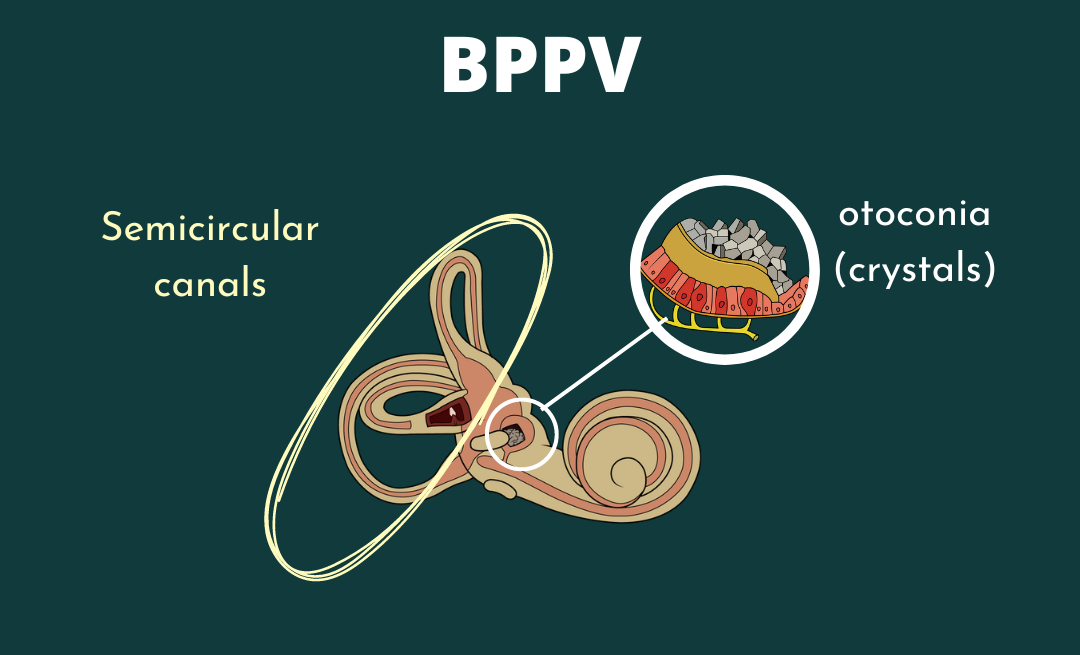Best Exercises for Vestibular Rehabilitation: A Guide to Reducing Dizziness and Improving Balance
Dizziness, imbalance, and vertigo can significantly impact daily life for those with a vestibular disorder. Whether you’ve recently been diagnosed or are simply exploring potential causes for your symptoms, vestibular rehabilitation therapy (VRT) offers a path toward improvement. VRT consists of targeted exercises designed to reduce dizziness and improve stability through two key principles: habituation and adaptation. While performing these exercises may initially provoke mild symptoms, this controlled exposure is part of the recovery process. However, it’s essential to strike a balance—exercises should be performed at a tolerable level to avoid overexertion and worsening symptoms. In this article, we’ll explore effective vestibular exercises, guidelines for symptom management, and tips to help you optimize your recovery.
Understanding Habituation and Adaptation in Vestibular Rehabilitation
The foundation of VRT lies in two physiological principles: habituation and adaptation. Habituation focuses on reducing sensitivity to specific motion triggers. When you repeatedly expose your vestibular system to movements that provoke mild symptoms, your brain gradually learns to ignore or “tune out” the dizziness signals. Adaptation, on the other hand, is your brain’s ability to recalibrate and improve how it processes vestibular input. This occurs through repeated, controlled stimulation of the vestibular system, which encourages neural plasticity and enhances balance and coordination.
During vestibular exercises, it’s normal to experience a brief increase in dizziness—this is expected and even beneficial but needs to be performed correctly. Symptom provocation is part of the process that promotes neural adaptation. The key is keeping this symptom increase at a tolerable level and allowing time for a complete recovery for symptoms to return to baseline. Pushing too hard can overwhelm your system, while being too cautious may slow your progress.
Guidelines for Safe and Effective Vestibular Exercises
To maximize the benefits of VRT, it’s important to follow general guidelines that help monitor and control symptom intensity. A helpful rule of thumb is the 2-point rule: when performing vestibular exercises, a temporary increase of up to 2 points from your baseline dizziness level (on a 0-10 scale) before pausing and allowing full recovery. For example, if your dizziness is at a baseline of 3, an increase to 5 during exercise is acceptable. This is person specific and is meant to help determine what a tolerable symptom increase looks like for VRT.
Additionally, symptoms should fully subside within 15 minutes after you complete the exercise. If you experience more intense dizziness or require longer than 15 minutes to recover, the exercise may be too challenging. This could indicate that you need to modify the intensity, duration, or frequency. It’s also essential to tailor exercises to your individual symptom triggers. Movements that you find personally aggravating—such as quick head turns or visual motion—should be incorporated gradually and at a level you can tolerate.
Again, these are general guidelines and may not be the right fit for everyone. They may help start a conversation with a VRT provider to ensure areas being address find a balance of a challenging stimulus to provoke change while also allowing space for someone to go about the other needs and challenges of their day. Other considerations include how one’s symptoms act. If symptoms are more delayed, then a provider may recommend a lower point increase before pauses to rest to avoid a delayed symptom flare. If someone recovers from symptoms quickly, but their symptom intensity increases quickly, they may work on movements that have a slightly higher symptom point increase before pausing for recovery.
Sometimes vestibular rehab isn’t for everyone, and timing can be just as important as having appropriate exercises, more on this is discussed in this podcast.
Five Tips for Vestibular Rehab
- The 15 minute rule can act as a guide for VRT and daily activities. If symptom increases take longer than 15 minutes for return to baseline symptoms, modifying may be warranted for overall symptom management and gradual progressions exercises or pacing of daily activities.
- A general guideline on when to pause and rest can be helpful in determining the correct level of challenge while balancing time to recover. A general starting point may look like a 2 point increase from baseline symptoms. Similar to strength training, if someone isn’t familiar to resistance training, easing into reps, sets, and weight can help reduce unpleasant side effects (muscle soreness for example) to gradually increase the intensity. A similar approach for dizziness can ideally help minimize boom bust cycles.
- Exercises should be tailored to you! Make sure the plan is working towards personal goals. Similar to strength training, weights, reps and sets are designed in a routine based on the goal or outcome someone has. Incorporating aspects of activities someone wants to get back to can help encourage consistency, see the progress, and incorporate something meaningful to work towards.
- It’s okay to ask questions. Maybe your goal is to get back to trail walks, and currently you’re sitting in a chair and moving your eyes between two targets. How is that helping? The exercises you’re doing now might not look exactly as the activity you’re wanting to getting back to. Understanding the parts being worked on, and how that will progress towards your ultimate goal can be helpful in understanding the various building blocks that go into higher level activities, and how your provider is addressing those in parts to then start putting together.
- Sometimes it’s too early to start. Or there may be a need a need to pause and start later on. That’s okay and normal. Vestibular conditions can have layers, and new layers may need other ways for support to work through. Sometimes the body isn’t quite ready to take on more stress that VRT may provide (it takes stress to encourage change) and that’s not a failure. Give the body the support it needs. For example, someone with vestibular migraine may need more time to establish acute meds or a preventative med to reduce attacks before being ready for VRT.
- Incorporate fun. Use your VRT provider as a resource to return to activities that spark fun and see what ideas they have to modify. You are more than your vestibular condition. It’s important to advocate and work towards goals but it’s also important to explore the other parts of what make you you. Those that dedicate 100% of their time and effort to getting better tend to realize that when they stopped to take time for themselves, they actually saw progress faster.
Final Thoughts: Finding the Right Balance in Your Rehabilitation
Vestibular rehabilitation exercises are highly effective when performed consistently and within appropriate symptom thresholds. Mild symptom provocation is expected and necessary for adaptation, but it’s crucial to avoid pushing too far. Following the 2-point rule and ensuring symptoms resolve within 15 minutes can help you safely build tolerance and resilience. However, vestibular disorders vary significantly from person to person, and there are always exceptions. It’s essential to work with your healthcare provider or vestibular therapist to determine the best exercise plan for your specific needs. With patience, persistence, and proper guidance, VRT can help you regain stability and reduce dizziness, improving your overall quality of life.
Disclaimer
Remember: this post is for informational purposes only and may not be the best fit for you and your personal situation. It shall not be construed as medical advice. The information and education provided here is not intended or implied to supplement or replace professional medical treatment, advice, and/or diagnosis. Always check with your own physician or medical professional before trying or implementing any information read here.







